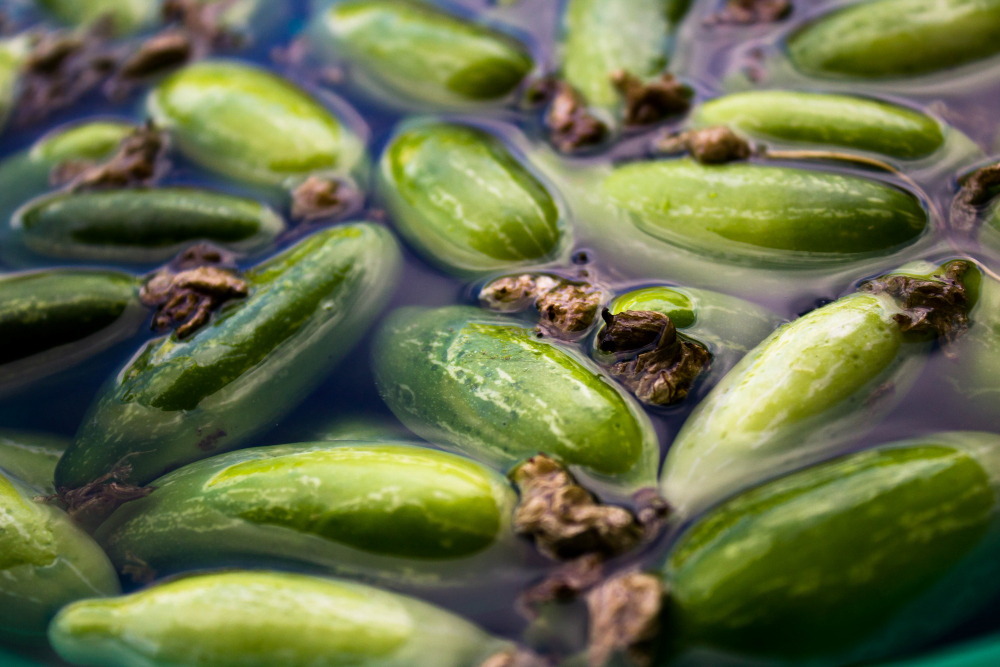Joint pain can be a debilitating issue, often impacting mobility and reducing overall quality of life. A significant cause of joint pain in many people is the buildup of uric acid in the body, which can lead to inflammatory conditions like arthritis. While modern medicine provides various solutions for managing joint pain, Ayurvedic medicine offers a natural, time-tested approach using herbs that have been relied upon for centuries.
In this post, we’ll explore the top Ayurvedic herbs—turmeric, ginger, Triphala, Boswellia, and giloy—that can help reduce inflammation, regulate uric acid levels, and promote better joint health. By incorporating these natural remedies into your routine, you may experience significant relief from joint pain and discomfort.
The Ayurvedic Approach to Joint Pain Relief
Ayurveda, the ancient Indian system of medicine, emphasizes treating the root causes of health issues rather than just addressing symptoms. In the case of joint pain, this means reducing inflammation, balancing bodily systems, and detoxifying the body to prevent the accumulation of uric acid and other harmful substances that can worsen joint pain. Ayurvedic herbs work holistically, offering relief and helping prevent the recurrence of symptoms.
Let’s look at the best Ayurvedic herbs for managing joint pain and explore how each herb contributes to joint health.
1. Turmeric: Nature’s Powerful Anti-Inflammatory
Benefits and Properties
Turmeric, a bright yellow spice commonly used in Indian cooking, has been renowned for its medicinal properties for centuries. It contains an active compound called curcumin, which has powerful anti-inflammatory and antioxidant properties. Curcumin blocks certain molecules and enzymes responsible for inflammation, making it especially effective in reducing joint pain and swelling.
How It Works for Joint Pain
Turmeric works by inhibiting the production of inflammatory markers, such as cytokines and enzymes, which are often elevated in conditions like arthritis. Studies have shown that curcumin can provide relief similar to some nonsteroidal anti-inflammatory drugs (NSAIDs) without the associated side effects.
How to Use Turmeric for Joint Pain Relief
- Turmeric Supplements: Curcumin is not highly bioavailable on its own, so taking it in supplement form (often combined with black pepper extract) can help your body absorb it better.
- Golden Milk: A traditional Ayurvedic remedy, golden milk is made by mixing turmeric powder with warm milk (or plant-based milk) and a pinch of black pepper. Drinking golden milk daily can help manage inflammation.
- Turmeric Tea: Add a teaspoon of turmeric powder to hot water, add black pepper and honey for taste, and drink it once a day.
2. Ginger: A Potent Anti-Inflammatory Herb for Joint Health
Benefits and Properties
Ginger, widely used as a culinary spice, is another potent anti-inflammatory herb. Its active compounds, gingerols, and shogaols, have been shown to reduce pain and inflammation in the body. This makes ginger particularly effective for alleviating symptoms associated with arthritis and other inflammatory conditions.
How It Works for Joint Pain
Ginger works by inhibiting the activity of enzymes that produce inflammation, much like turmeric. It can reduce pain, improve joint flexibility, and provide relief from swelling. Additionally, ginger has antioxidant properties, which help protect cells from damage and may slow down the progression of joint-related issues.
How to Use Ginger for Joint Pain Relief
- Ginger Tea: Boil fresh ginger slices in water, strain, and enjoy a cup of ginger tea daily. This is an effective way to incorporate ginger into your routine.
- Ginger in Cooking: Fresh ginger can be added to meals for both flavor and its health benefits.
- Ginger Supplements: Available in capsule form, ginger supplements provide a concentrated dose of ginger’s active ingredients.
3. Triphala: A Detoxifying and Balancing Ayurvedic Formula
Benefits and Properties
Triphala is a blend of three fruits—amla, haritaki, and bibhitaki—and is widely used in Ayurveda for its detoxifying and balancing properties. It helps cleanse the body, balance the doshas (body energies), and support digestive health. Triphala’s benefits for joint pain are tied to its ability to promote healthy detoxification, reduce inflammation, and support the body’s natural healing processes.
How It Works for Joint Pain
Triphala helps the body eliminate toxins that may contribute to inflammation and joint pain. By supporting liver and kidney function, Triphala aids in the removal of excess uric acid from the body, a known contributor to joint discomfort. This herbal formula also promotes better digestion and nutrient absorption, which can help reduce inflammation throughout the body.
How to Use Triphala for Joint Pain Relief
- Triphala Powder: Mix a teaspoon of Triphala powder in warm water and drink it before bed. This can help cleanse the digestive system and promote regular elimination.
- Triphala Capsules: If you prefer a more convenient option, Triphala is also available in capsule form.
- Triphala Tea: You can steep Triphala powder in hot water for a soothing herbal tea.
4. Boswellia: A Natural Inflammatory Modulator
Benefits and Properties
Boswellia, also known as Indian frankincense, is a resin obtained from the Boswellia tree. This resin contains compounds called boswellic acids, which have been shown to possess anti-inflammatory and pain-relieving properties. Boswellia is commonly used in Ayurvedic treatments for arthritis, specifically because of its ability to block certain enzymes that cause inflammation.
How It Works for Joint Pain
Boswellia reduces the production of inflammatory cytokines and modulates the immune system’s response, which helps decrease pain, stiffness, and swelling in the joints. It is particularly beneficial for those with rheumatoid arthritis, osteoarthritis, and other joint-related conditions.
How to Use Boswellia for Joint Pain Relief
- Boswellia Supplements: Boswellia extract is available in capsule form and can be taken daily for joint pain management.
- Boswellia Topical Application: Boswellia oil can be applied to affected joints to provide localized relief from pain and swelling.
- Boswellia Tea: You can steep Boswellia resin in hot water to make a tea, though this is less common.
5. Giloy: The Immunity-Boosting, Anti-Inflammatory Herb
Benefits and Properties
Giloy, scientifically known as Tinospora cordifolia, is an Ayurvedic herb celebrated for its immune-boosting and anti-inflammatory properties. Known as “Amrita” in Ayurveda, giloy has a range of therapeutic effects and is often used to support the immune system, detoxify the body, and reduce inflammation.
How It Works for Joint Pain
Giloy helps lower uric acid levels in the body, making it particularly beneficial for those who suffer from gout-related joint pain. Additionally, it helps reduce inflammation in the joints and can provide relief from pain and stiffness. Its detoxifying properties aid in removing toxins that can aggravate joint pain, while its immune-boosting effects support the body’s natural healing process.
How to Use Giloy for Joint Pain Relief
- Giloy Juice: Available at health stores, giloy juice can be consumed daily to reduce inflammation and support joint health.
- Giloy Supplements: Giloy capsules or tablets provide a convenient way to incorporate this herb into your routine.
- Giloy Tea: You can also boil giloy stems in water and drink the decoction once it has cooled slightly.
Lifestyle Tips for Managing Joint Pain with Ayurveda
Along with incorporating Ayurvedic herbs into your routine, certain lifestyle changes can further enhance joint health:
- Stay Hydrated: Drinking plenty of water helps flush out excess uric acid and toxins, which can reduce inflammation.
- Follow an Anti-Inflammatory Diet: Eating foods rich in omega-3 fatty acids, such as nuts and seeds, can help reduce inflammation.
- Practice Regular Exercise: Gentle exercises like yoga or swimming can help maintain joint flexibility without putting excessive strain on the joints.
- Maintain a Healthy Weight: Extra body weight can increase pressure on joints, worsening pain. Maintaining a healthy weight can reduce stress on joints and improve overall mobility.
Precautions and When to Consult an Ayurvedic Practitioner
Ayurvedic herbs provide a holistic approach to managing joint pain, but it’s essential to consult with an Ayurvedic practitioner or healthcare provider before starting any new herbal treatment, especially if you’re taking medications or have existing health conditions. Additionally, while these herbs are generally safe, some may have side effects or interactions with certain medications.
Conclusion
Managing joint pain naturally with Ayurvedic herbs can be a safe and effective way to support joint health and reduce inflammation. Herbs like turmeric, ginger, Triphala, Boswellia, and giloy offer a range of benefits, from reducing uric acid levels to enhancing the body’s natural detoxification processes. With consistent use and a healthy lifestyle, these Ayurvedic remedies can provide lasting relief from joint discomfort, supporting better movement and quality of life.
Incorporating Ayurvedic herbs into your daily routine could be a game-changer for your joint health journey. Consider giving these natural remedies a try and experience the potential benefits they offer for pain relief, inflammation reduction, and overall well-being.





